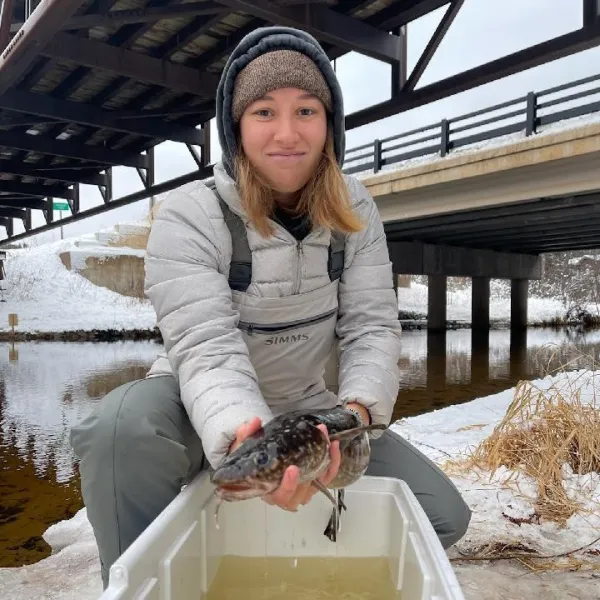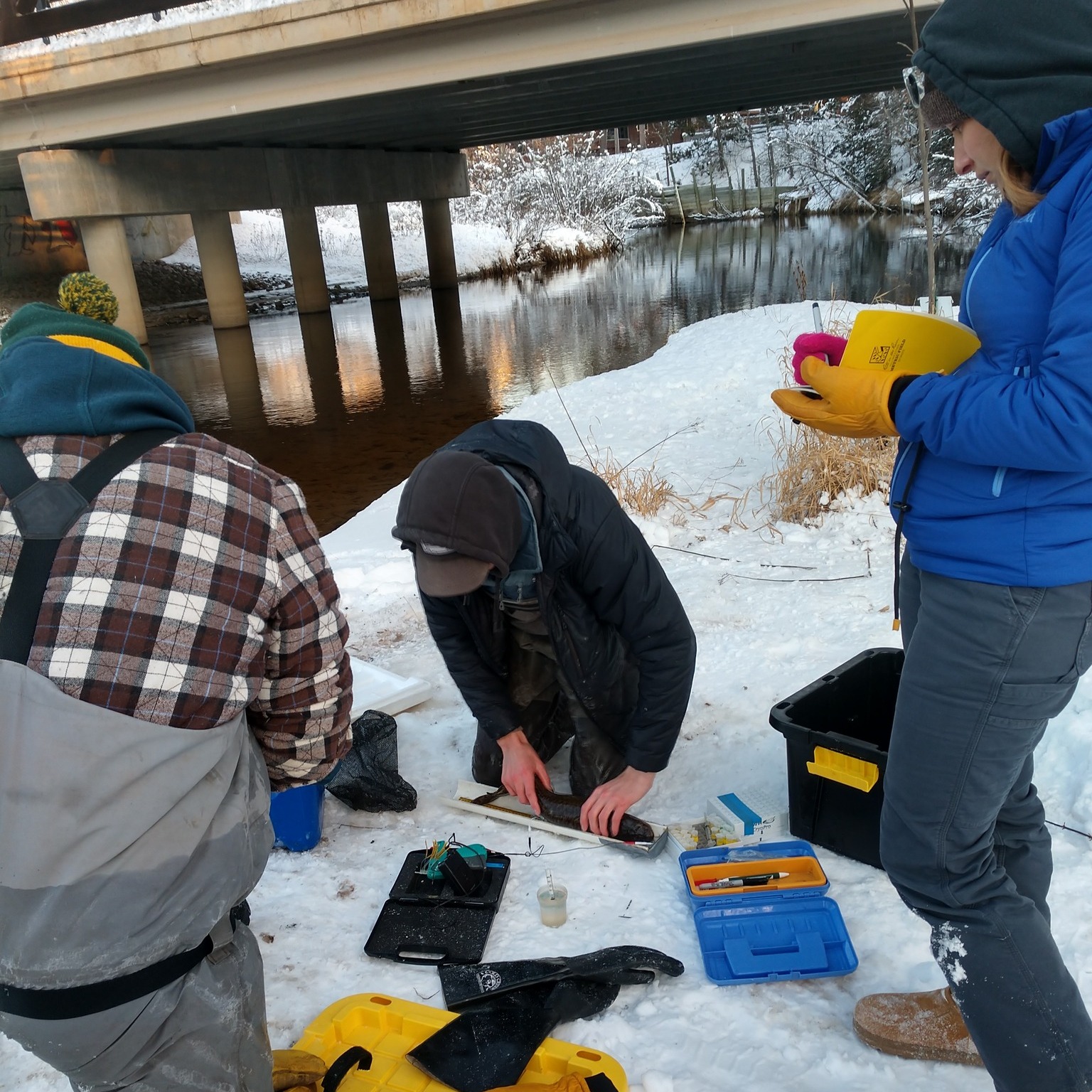A Northern Michigan University biology lab is researching burbot, an understudied native cold-water fish that exists throughout the Great Lakes. Graduate students, undergraduates and even a high school intern are gaining biological knowledge of the species' development and characteristics.
“As far as I am aware, we are the only group in the Great Lakes region growing burbot in the lab,” said Biology Department Head Jill Leonard. “I really like them because they're interesting biologically. Burbot is a species that's a member of the gadiform family, which is the family that includes cod and haddock, and burbot are the only freshwater species in that entire family. They retain a lot of marine fish characteristics, and yet we find them here in freshwater, which makes them an oddball in our system because they act like marine fish even though they are freshwater fish.”
Graduate student Alexis Pupo is studying the characteristics of young burbot and how they can control or not control their movements in currents. Burbot larvae, when hatched, are tiny and can't swim well, and they're taken with the current, making them passive drifters. Yet some fish can control their movements up and down the water column and across different currents. Pupo is from Miami and said working in the Leonard lab has been a unique experience.
“I've had to adapt to working in the cold field in January to collect fish gametes, which has been very challenging but also invigorating and exciting,” said Pupo. “We have to be very creative and crafty to devise experimental apparatuses, primarily because the embryos are about one millimeter in size, and the larvae hatch at 3-4 millimeters. They are tiny!
“I feel like I've really made a lot of headway through however many trials and errors. I've definitely improved my problem-solving skills and creative approach to science, which is always very useful in this field and will certainly help me in the future. The burbot certainly makes you work hard for that master's degree.”
Graduate student Michael Woodworth is characterizing where burbot are, their use of space and their migration attached to spawning. He runs traps and ice fishes while trying to understand where they go and when they migrate. He also focuses on the maturation of female burbot.
Another graduate student, Andrew Shapiro, is working on a project based on embryonic development and hatching. There is variability in hatching times for burbot, and Shapiro is determining what it means to be an early hatcher and a late hatcher, as well as the consequences for those fish.
Leonard says burbot are incubated at very cold temperatures of 2-3 degrees Celsius. The lab spawns the fish with one male and one female, and the families take four to six weeks to develop before they hatch. It may take up to four weeks for all the embryos to hatch from one family, even though they were fertilized the same day, due to individual variabilities.
There is an increased interest in fishing for burbot, but there aren't regulations on how many people can catch. Leonard said burbot is still considered in Michigan to be a rough fish, which means it's a non-game species, and there are limited rules on harvesting burbot. There are a few regulations for trapping them in rivers, but not for recreational ice fishing.
“Sometimes people who ice fish will go out and bring home 60-70 burbot in a night, which is a lot,” said Leonard. “We don't think they are endangered or anything like that, but there's not very good information on their population size and what that kind of harvest could do. The DNR is starting to look at that and think whether that's problematic for the fish or whether they should start doing more management or any management for burbot.”
There is also an increasing interest in them as an aquaculture species with controlled farming methods. Leonard said Idaho and Europe are starting to develop techniques to grow burbot as a potential food fish because “they're quite tasty.”
Leonard and her lab have been studying burbot for about six years. Her past research on fish has focused on brook trout, salmonids, and other species. The lab is a large research group whose members help each other and pursue personal interests in coldwater fish.


